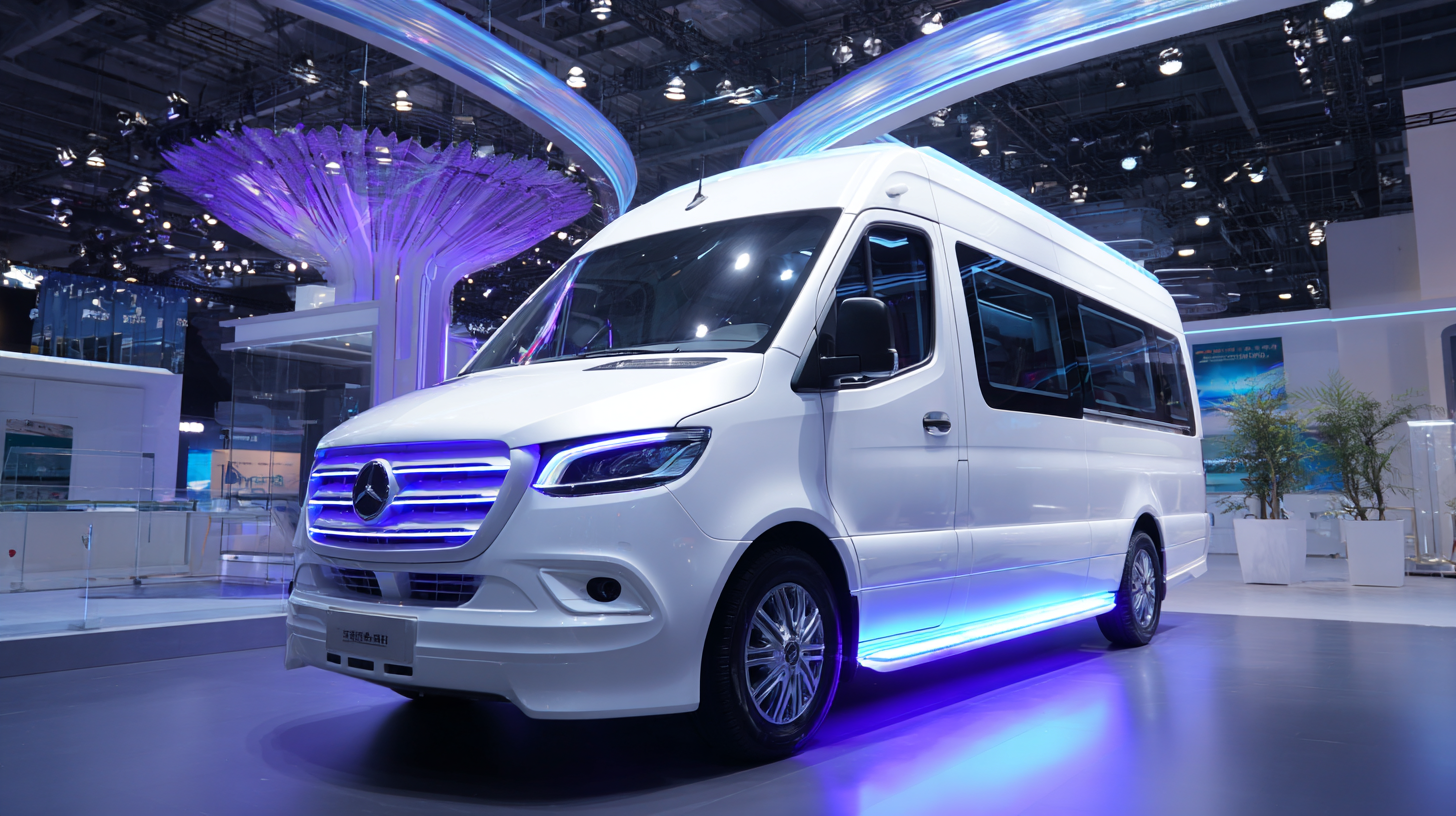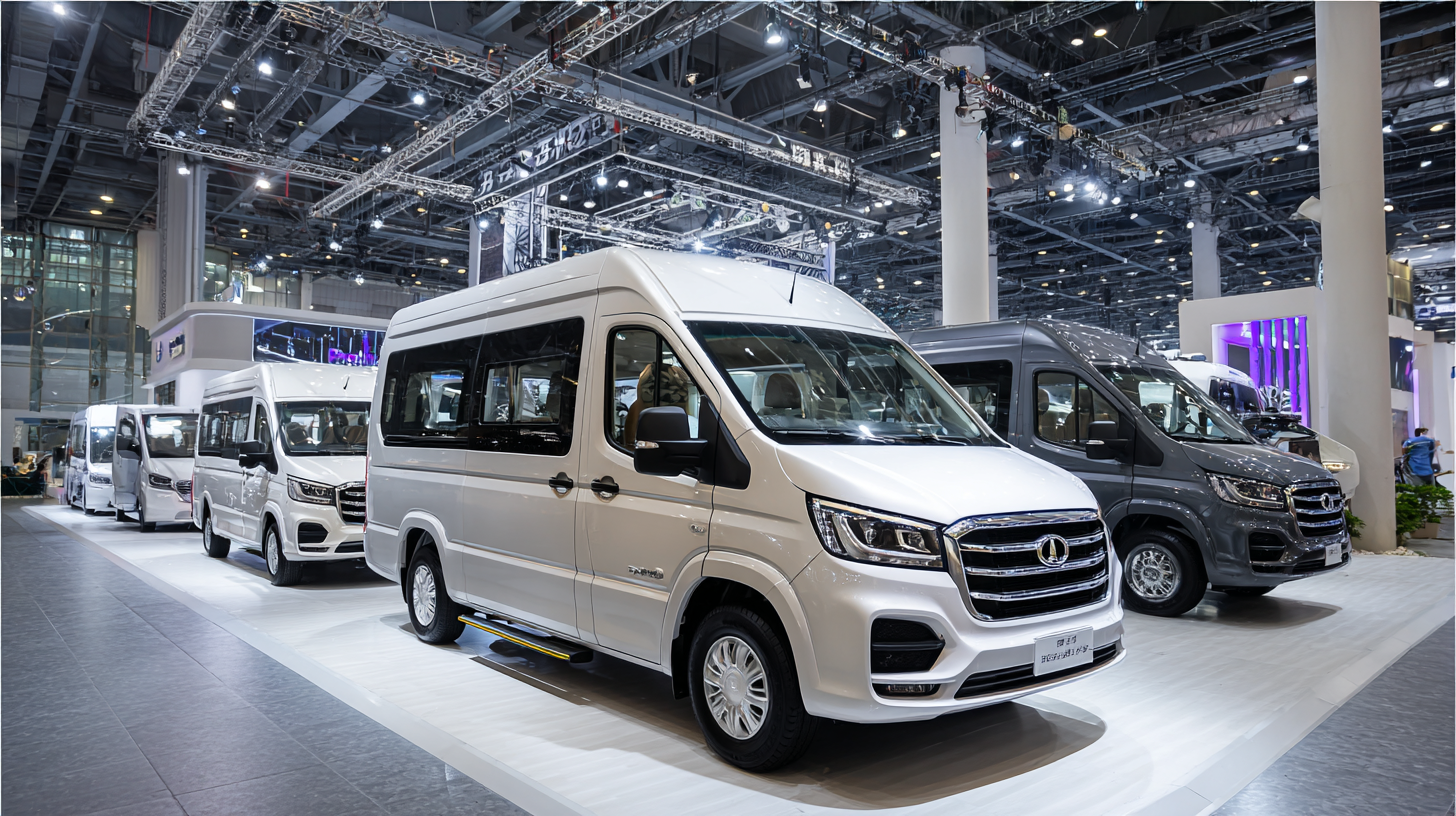Exploring the Rise of Wheelchair Accessible Vans at the 2025 China Import and Export Fair
The 2025 China Import and Export Fair, also known as the 138th Canton Fair, serves as a pivotal platform to showcase innovations across various sectors, including the rapidly growing market for Wheelchair Accessible Vans. According to a recent report by the Global Accessibility Organization, the global demand for such vehicles is projected to increase by over 28% annually, fueled by an aging population and rising awareness of inclusive mobility solutions. In China, the wheelchair accessible vehicle segment is expected to capture a significant share of the automotive market, further catalyzed by government policies promoting barrier-free transportation. As mobility challenges continue to affect millions, the inclusion of Wheelchair Accessible Vans in this prestigious fair highlights a proactive step towards enhancing accessibility and meeting the evolving needs of individuals with disabilities. The fair not only presents opportunities for manufacturers to showcase their latest designs and technologies but also aims to foster discussions on best practices in inclusive vehicle design and policy advocacy.

The Importance of Accessibility in Modern Vehicle Design
As the global automotive industry continues to evolve, the importance of accessibility in vehicle design has never been more pronounced. Reports from the World Health Organization indicate that around 15% of the world's population experiences some form of disability, highlighting the need for greater inclusivity in modern transport solutions. With this demographic in mind, wheelchair accessible vans have emerged as a critical segment in the vehicle market, responding to the demand for mobility options that empower individuals with disabilities.
At the upcoming 2025 China Import and Export Fair, the emphasis on accessibility will likely take center stage, showcasing innovations that meet the needs of all users. According to a recent market analysis by Research and Markets, the global market for wheelchair accessible vehicles is projected to grow by 9% annually through 2030, driven by increasing awareness and regulatory support for disability rights. This trend underscores a significant shift in consumer preferences, where potential buyers prioritize not only the functionality of vehicles but also their ability to cater to diverse physical needs, ensuring that everyone can participate fully in society.
Innovative Technologies in Wheelchair Accessible Vans
As the demand for inclusive mobility solutions rises, innovative technologies in wheelchair accessible vans are becoming essential. The global market for vehicles designed for individuals with disabilities was valued at approximately USD 4.79 billion in 2024, with projections indicating growth to USD 5.34 billion by 2025. This significant increase reflects a broader recognition of the need for mobility solutions that cater to people with disabilities, highlighting a growing commitment to inclusivity in vehicle design.
At the forefront of this movement are advancements that prioritize both functionality and user experience. For instance, some emerging solutions focus on smart technology integration, allowing users to control various vehicle functions through mobile applications. Furthermore, the exploration of autonomous driving technologies holds promise for enhancing independence among wheelchair users, as they may soon rely on self-driving vans to navigate urban environments seamlessly. Innovations driven by a commitment to accessibility not only enhance the quality of life for individuals with disabilities but also help foster an inclusive society where mobility is viewed as a fundamental right.

Market Trends in the Mobility Vehicle Industry at the Fair
At the 2025 China Import and Export Fair, the mobility vehicle industry is witnessing significant trends, particularly in the realm of wheelchair accessible vans. Research indicates that the global market for wheelchair accessible vehicles is expected to reach approximately $4 billion by 2027, growing at a CAGR of over 7% from 2022 to 2027. This growth is largely attributed to the increasing focus on inclusivity and the rising number of individuals with mobility challenges in countries like China.
Furthermore, advancements in technology are leading to enhanced designs and functionalities of these vans. The integration of features such as automated ramp systems and improved safety standards has made wheelchair accessible vans more appealing to consumers. Industry reports suggest that 60% of potential buyers prioritize safety and ease of use, driving manufacturers to innovate continually.
The fair serves as a vital platform for stakeholders in the mobility vehicle sector to showcase their latest offerings and respond to the growing demand for accessible transportation solutions. As the industry evolves, it reflects a broader commitment to enhancing mobility for all individuals, regardless of physical limitations.
Collaborative Efforts to Enhance Disability Inclusion in Transportation
The rise of wheelchair accessible vans is a significant step forward in enhancing disability inclusion in transportation, especially as collaborative efforts with governments and NGOs gain momentum. Reports suggest that approximately 15% of the world's population lives with some form of disability, highlighting an urgent need for inclusive transport solutions. For instance, recent initiatives in countries like Nigeria, where a Non-Governmental Organization has partnered with government bodies to enforce disability rights, demonstrate a growing recognition of the importance of accessible transportation. This alignment between various sectors is crucial to ensure that individuals with disabilities can navigate their communities with dignity and independence.
Moreover, innovative programs such as Disability Mentoring Day show the power of collaboration in connecting individuals with disabilities to employment opportunities, enabling them to participate fully in society. In regions like Cambodia, the introduction of disabled-friendly buses equipped with essential features for passengers with visual and hearing impairments exemplifies best practices for accessible public transport. As countries strive to meet the Sustainable Development Goals, the push for wheelchair accessible vehicles remains pivotal in creating a more inclusive environment, ensuring no one is left behind in the quest for mobility and equal opportunity.
Exploring the Rise of Wheelchair Accessible Vans at the 2025 China Import and Export Fair - Collaborative Efforts to Enhance Disability Inclusion in Transportation
| Feature |
Specification |
Accessibility Type |
Capacity |
Estimated Price (USD) |
| Ramp Type |
Foldable |
Manual |
1 Wheelchair + 3 Passengers |
30,000 |
| Tie-Down System |
4-Point |
Automatic |
1 Wheelchair + 2 Passengers |
35,000 |
| Interior Space |
High Roof |
Spacious |
2 Wheelchairs + 1 Passenger |
50,000 |
| Drive Type |
All-Wheel Drive |
Enhanced Stability |
1 Wheelchair + 4 Passengers |
55,000 |
The Impact of Government Policies on Accessible Transportation Solutions
Government policies play a pivotal role in shaping the landscape of accessible transportation solutions, especially in the context of the increasing availability of wheelchair accessible vans highlighted at events like the 2025 China Import and Export Fair. These policies often focus on promoting inclusivity, ensuring that individuals with disabilities have equal access to transportation options. By offering subsidies or tax incentives for manufacturers and businesses that produce or modify accessible vehicles, governments can significantly boost the supply of these essential modes of transport.
In addition to financial incentives, regulatory frameworks are crucial for establishing standards that ensure safety and reliability in accessible vehicles. Governments can implement stringent guidelines on vehicle modifications, ensuring that all wheelchair accessible vans meet specific safety requirements. This creates a market where consumers can trust that the vehicles they purchase are both functional and secure. As a result, these measures not only enhance the availability of wheelchair accessible vans but also encourage community acceptance and usage, ultimately fostering a more inclusive society.
Exploring the Rise of Wheelchair Accessible Vans at the 2025 China Import and Export Fair
